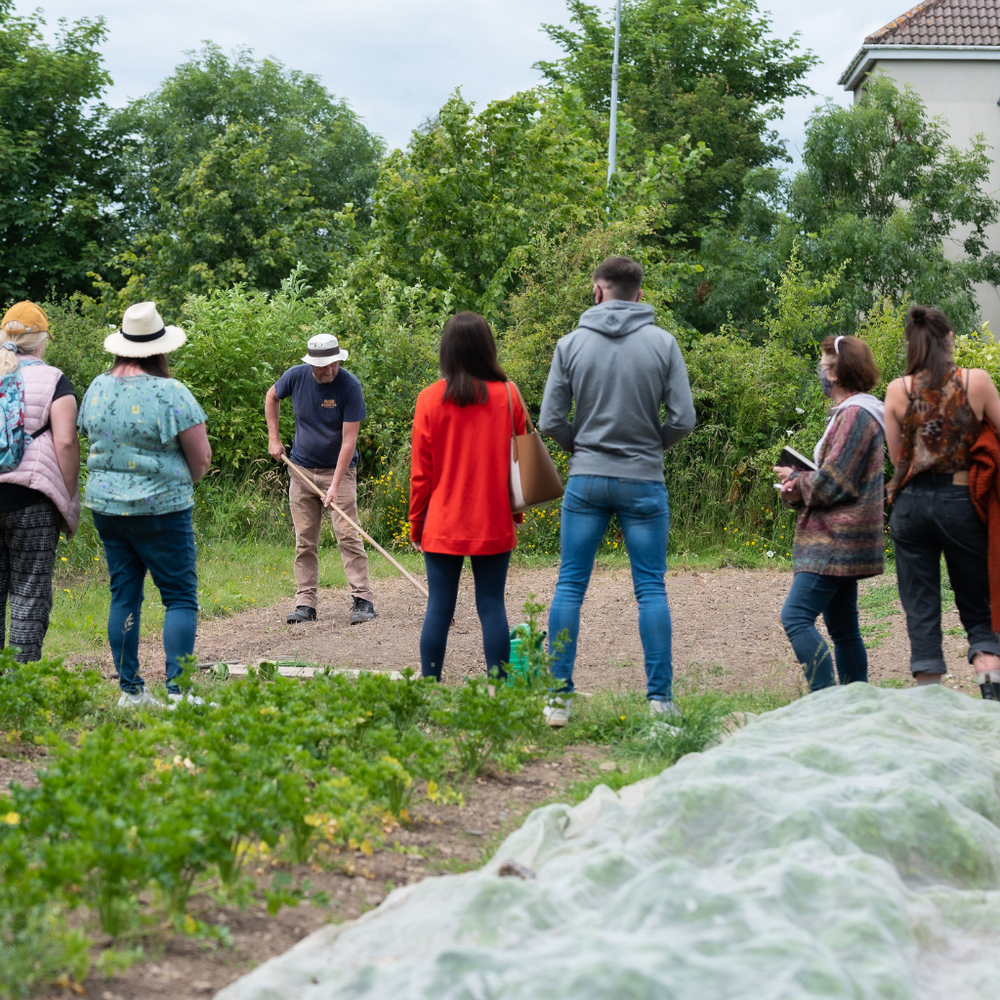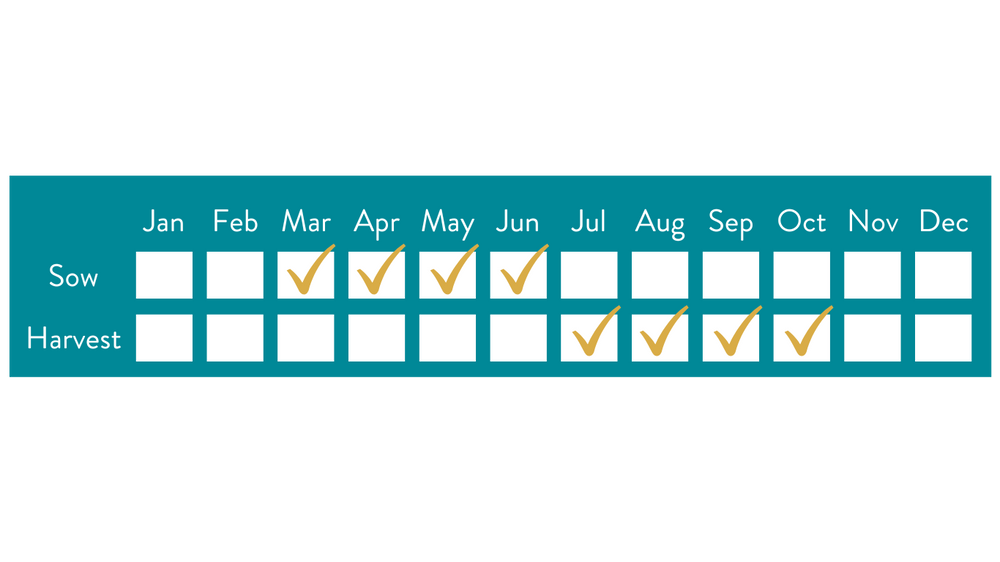
Video Guides
Need to build a raised bed? Or maybe you're battling those pesky slugs. We've got videos filled with easy and practical tips to help you in your veg patch.

Courses
Learn to grown, cook and eat some of your own food with our courses held at GROW HQ.

Courgette
Veg Type:
Fruit
Growing Location:
Indoors and Outdoors

Why Grow It
It would be more difficult to think of reasons why not to grow courgettes. They are easy to grow, incredibly prolific and grow freakishly fast in the summer. Two or three plants will be more than enough. In fact, your only problem will be working out what to do with a glut of courgettes. Courgette bread anyone?
Recommended Variety
- Defender F1
- Ambassador F1
- Atena Polka F1
Sowing
- Courgettes like a fertile soil. Add compost and a general fertiliser a week or two before sowing/transplanting.
- Sow seeds indoors (in a tunnel, glasshouse or a sunny windowsill) in 10cm pots at a depth of 2cm in late April or May.
- The seeds are large and germinate and grow quickly, so don’t put them in modules or very small pots.
- Also, don’t sow too early as courgettes are frost sensitive and hate cold weather, so you don’t want them ready for transplanting before May.
- Seeds can be sown direct into the soil in May, but this tends to be less successful than transplanting.
Growing
- Courgettes should be ready for transplanting in May.
- Space plants at least 60-80cm apart.
- Courgettes are often transplanted through a ground cover, like perforated plastic. This helps conserve water in the soil and suppresses weeds.
- Courgettes like the soil moist, so don’t let the soil dry out.
Harvesting
- Courgettes can be harvested at any stage from small fruits (6cm long) with flowers on upwards.
- Male flowers (those with no fruit behind them) can also be harvested.
- The more you pick, the more fruit the plant will produce.
- Don’t leave big marrows on the plant, as it will reduce the production of new fruits.
TIPS
- Try sowing courgette seeds in biodegradable pots – they can then be planted out (pot and all) into the soil.
- Allow at least some of your courgettes to grow into giant marrows at the end of the season, then pick and store them. The thick skin will preserve them over the winter.
Problems
- Newly transplanted courgettes are very susceptible to slugs, so trap, hand pick or use a less toxic slug pellet like iron phosphate.
- Powdery mildew is a disease that attacks the leaves and can reduce yield. This can be controlled by spraying skimmed milk, diluted up to 1 to 10 with water.
Our food system is broken and at GIY we believe that nurturing a real connection to where our food comes from is the key to fixing it.
We're on a mission to inspire a global movement of food growers, one GIYer at a time.
Sign up to be the first to hear about all things GIY.













